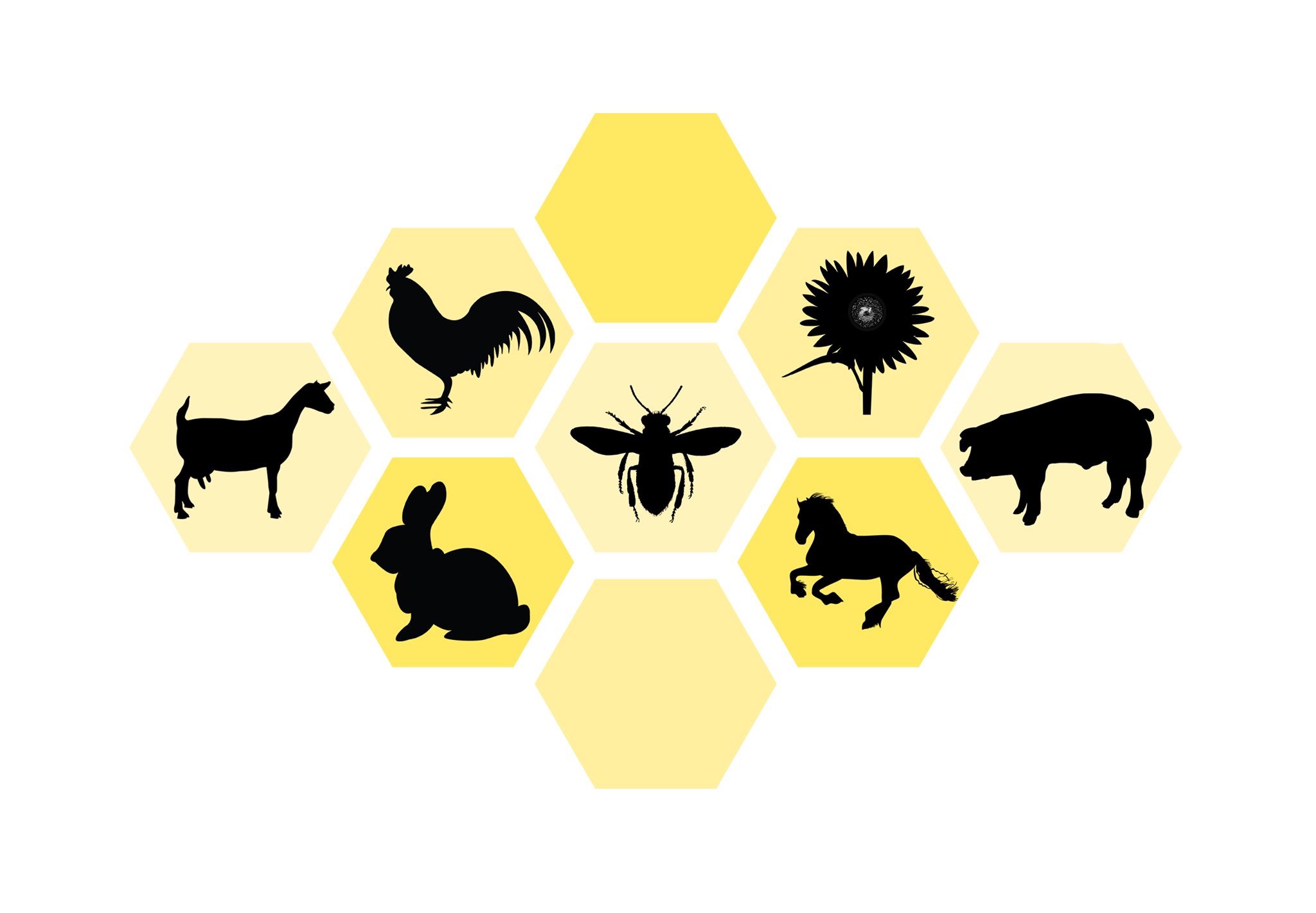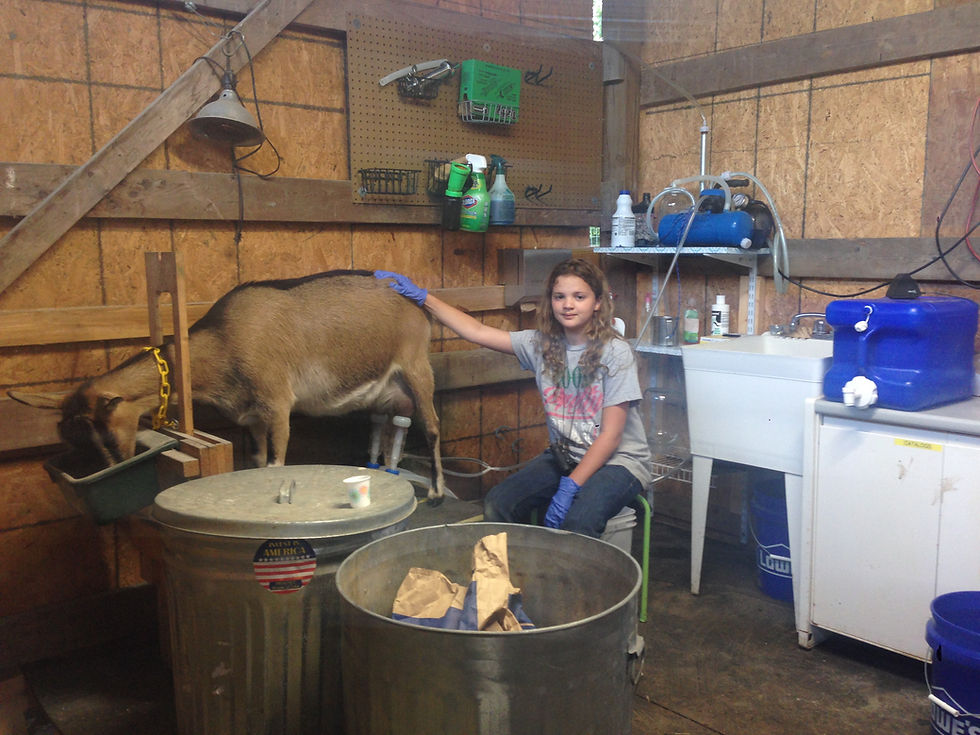Why would I want to have a licensed dairy if I have a successful herdshare program?
- Sarah Williams

- Aug 9, 2019
- 4 min read
I have been obsessed with having a licensed dairy since the day I brought Lily, a grade Alpine doe, and her Saanen-cross daughter Talullah home and fell in love. The minute I put those girls into an electric mesh fence to eat the brush behind the house, I fell so hard and deep. I could really just sit there watching them all day, as they browse and chew their cuds.
On to dairy dreaming. I do have a little bit of background experience - I started college as an Animal Science major, and my work study for 2 years was milking a small herd of prize-winning Jersey cows at the college dairy. It was absolutely amazing and exhausting - I only quit when I transferred on to become a pre-med at William & Mary. I also am not intimidated by a 500-page ordinance laying out every nail, drain and wall surface, as I run a BSL-2 research laboratory (infectious body fluids) in my day job. So I am comfortable with the minutiae of requirements.

I knew that I needed to build my knowledge base by managing my herd and milking practices for a few years, and make sure that I loved it as much as I thought I did. So I began milking Lily in June of 2015. We milked by hand, and we milked with a Simple Pulse machine (that I'm still using a hopped up, customized version of). I bred Lily for a March kidding, along with her daughter Talullah and another Alpine doeling named Aloo from a high production and show herd.

I started my herdshare program in March of the following year. We started with 3 share members and very slowly accrued a few more, so that by the end of the season, we had 10. We still have 7 of those original 10 members in our herdshare program, not bad for retention over 4 years!
With those 10 members, we were able to cover all feed, hay and veterinary expenses for our 3-doe/1-buck herd for our first year. We set a goal to double our members to 20 for the following year, and doubled our herd as well to accommodate the extra needed milk. We also raised our prices from $10/gallon, which barely covered expenses and no labor, to $12.50/gallon, and finally to where we have remained, at $16/gallon.
Our third year, we set a goal of 30 members, and while we hit 37 members getting 1/2 gallon of milk in the peak of summer, we were back down to 30 by winter and happy with that. That's where we plan to stay unless something major happens. We're comfortable with the number of does that we milk to have a steady milk supply all year for 30-35 herdshare members, plus a large spring and summer flush of milk.
Which leads me to the micro dairy. I want a licensed dairy so that I can make chevre, skyrr and fresh quick cheeses using the summer glut of milk. I may add a few does, but not too many. I don't intend on becoming a high-production dairy, but rather produce enough to sell locally at a few farmer's markets, to a few select wineries and local shops.
So why is that my plan? It's all about income and serving my community.
If you look at herdshare income, each member has signed a contract and must give 30 days notice. They pay $35/month for a half gallon each week YEAR ROUND, which averages out to about $16/gallon over the course of a year. If you look at chevre income, the going rate is about $1-1.25/oz direct to consumers, and less wholesale. If I calculate a cheese yield of 1 lb cheese for 1 gallon of milk, and if I sold all of my chevre direct to consumers at $1.15/oz, I would average $18.40/gallon.
That $2.40/gallon extra may seem nice, but don't forget that we've got to build a grade A or manufacturing grade dairy, buy labels and containers, cultures, etc, increased labor to make the cheese (and do all of those dishes!). We will also have to develop and maintain a whole new level of logs and inspections, etc. It also doesn't take into account that probably half of the chevre we sell will likely be wholesale, perhaps for $0.75/oz, reducing or eliminating the advantage that chevre production appears to have.
Now you tell me - would you ditch the steady income of herdshare memberships, for the more variable income and lower margin of chevre production? I wouldn't, and I'm not planning to.
That said, we all know that milk production peaks in spring and even in high producers, drops off in October. If I want to maintain 30 herdshare members through the winter, I'm going to need about double that supply in the summer. What to do with all of that extra milk? Let's sell it as a value-added product, such as chevre.
In terms of serving the community, our herdshare members actively sought us out because they need the raw goat milk for themselves, their family or their pets (3 members use it to feed their dogs!). While it is a vital part of our farm, it is not something we actively market - I do not advertise our herdshare program in our Instagram or Facebook posts, nor in our newsletter emails. I would feel as though I were betraying them if I ceased herdshare operations for the almighty buck (which as you can see, really isn't as profitable at the end of the day).
I started this blog because I want to help other farmers reach their dairy production dreams. I love producing and helping others produce clean raw milk and cheeses. If you can learn from my mistakes and smooth out your journey, all the better.
In the next post, I'll talk about where we are right now in terms of our milking parlor, cleaning, etc., and where we're going towards the licensed dairy and RAWMI certification over the next 8 months. Since I spend much of my time obsessing over it, I might as well channel it into something productive that may help someone else by writing about it! Until next time...




Comments